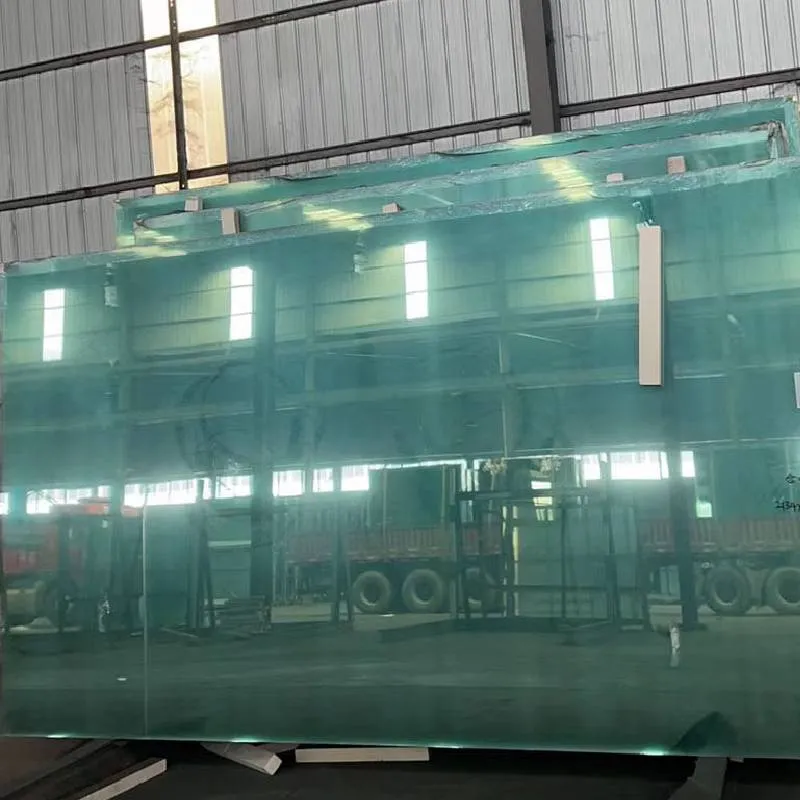The Rise of Corrugated Glass A New Era in Architecture and Design
In recent years, the architectural and design landscape has evolved, pushing the boundaries of creativity and functionality. One material that has gained significant attention in this transformation is corrugated glass. Combining the traditional qualities of glass with innovative engineering techniques, corrugated glass has emerged as a versatile and aesthetically pleasing option for a variety of applications, from residential buildings to commercial structures.
Understanding Corrugated Glass
Corrugated glass is a type of glass that has been shaped into a series of parallel ridges and grooves. This unique texture not only adds visual interest but also enhances the structural integrity of the glass. The corrugation process strengthens the glass, making it less prone to breakage while allowing for larger spans without the need for extensive framing. This combination of strength and beauty positions corrugated glass as a desirable choice for modern design.
Architectural Applications
One of the most compelling reasons for the increasing popularity of corrugated glass is its architectural application. Designers and architects appreciate how this material can transform spaces, allowing for a play of light and shadow that is often difficult to achieve with traditional flat glass. Corrugated glass can be used in various ways—from facade cladding to roofs, partitions, and skylights.
For example, in commercial buildings, corrugated glass facades can create a dynamic visual identity while allowing natural light to permeate the interior spaces. The ridges refract light, resulting in an enchanting interplay of reflections that can change throughout the day. Similarly, in residential design, corrugated glass can be employed in sunrooms or conservatories, providing an abundance of natural light while maintaining a connection to the outside environment.
Sustainability and Energy Efficiency
In an era where sustainability is a top priority, corrugated glass also holds significant environmental advantages. The material is often made from recycled glass, further reducing its ecological footprint. Moreover, corrugated glass has excellent insulating properties, which can contribute to improved energy efficiency in buildings. By maximizing natural light while minimizing heat loss, this material can help create spaces that are both environmentally friendly and cost-effective in terms of energy consumption.
corrugated glass
Innovative Design Possibilities
The design possibilities with corrugated glass are virtually limitless. It can be combined with various materials, such as steel and wood, to create striking contrasts and harmonies. Many designers are experimenting with color and texture, using tinted or patterned corrugated glass to create unique visual effects. This innovation allows architects to push the envelope of conventional design, fostering a new aesthetic language that resonates with modern sensibilities.
Additionally, as technology advances, the manufacturing process for corrugated glass continues to improve. New techniques allow for the production of larger sheets and the incorporation of advanced coatings that enhance durability, safety, and thermal performance. This ongoing evolution means that corrugated glass is not just a passing trend but a material poised for long-term use in the architectural canon.
Challenges and Considerations
While the benefits of corrugated glass are substantial, there are challenges that architects and builders must consider. The installation process can be complex, requiring skilled labor to ensure that the glass is properly supported and sealed. Moreover, the cost of corrugated glass can be higher than traditional glass, which may make it less accessible for some projects.
However, as awareness of the material's benefits continues to grow, the demand for corrugated glass is likely to increase, potentially driving down costs and making it a more viable option for a wider range of applications.
Conclusion
In conclusion, corrugated glass represents a significant leap in the evolution of architectural materials. With its unique properties, aesthetic appeal, and sustainability potential, it offers a multitude of benefits that align closely with contemporary design philosophies. As architects and designers increasingly embrace this innovative material, we can expect to see a new wave of striking and functional spaces that not only captivate the eye but also harmonize with the environment. In the years to come, corrugated glass may well redefine how we perceive and interact with architectural spaces, marking the dawn of a new era in design.
 Afrikaans
Afrikaans  Albanian
Albanian  Amharic
Amharic  Arabic
Arabic  Armenian
Armenian  Azerbaijani
Azerbaijani  Basque
Basque  Belarusian
Belarusian  Bengali
Bengali  Bosnian
Bosnian  Bulgarian
Bulgarian  Catalan
Catalan  Cebuano
Cebuano  Corsican
Corsican  Croatian
Croatian  Czech
Czech  Danish
Danish  Dutch
Dutch  English
English  Esperanto
Esperanto  Estonian
Estonian  Finnish
Finnish  French
French  Frisian
Frisian  Galician
Galician  Georgian
Georgian  German
German  Greek
Greek  Gujarati
Gujarati  Haitian Creole
Haitian Creole  hausa
hausa  hawaiian
hawaiian  Hebrew
Hebrew  Hindi
Hindi  Miao
Miao  Hungarian
Hungarian  Icelandic
Icelandic  igbo
igbo  Indonesian
Indonesian  irish
irish  Italian
Italian  Japanese
Japanese  Javanese
Javanese  Kannada
Kannada  kazakh
kazakh  Khmer
Khmer  Rwandese
Rwandese  Korean
Korean  Kurdish
Kurdish  Kyrgyz
Kyrgyz  Lao
Lao  Latin
Latin  Latvian
Latvian  Lithuanian
Lithuanian  Luxembourgish
Luxembourgish  Macedonian
Macedonian  Malgashi
Malgashi  Malay
Malay  Malayalam
Malayalam  Maltese
Maltese  Maori
Maori  Marathi
Marathi  Mongolian
Mongolian  Myanmar
Myanmar  Nepali
Nepali  Norwegian
Norwegian  Norwegian
Norwegian  Occitan
Occitan  Pashto
Pashto  Persian
Persian  Polish
Polish  Portuguese
Portuguese  Punjabi
Punjabi  Romanian
Romanian  Russian
Russian  Samoan
Samoan  Scottish Gaelic
Scottish Gaelic  Serbian
Serbian  Sesotho
Sesotho  Shona
Shona  Sindhi
Sindhi  Sinhala
Sinhala  Slovak
Slovak  Slovenian
Slovenian  Somali
Somali  Spanish
Spanish  Sundanese
Sundanese  Swahili
Swahili  Swedish
Swedish  Tagalog
Tagalog  Tajik
Tajik  Tamil
Tamil  Tatar
Tatar  Telugu
Telugu  Thai
Thai  Turkish
Turkish  Turkmen
Turkmen  Ukrainian
Ukrainian  Urdu
Urdu  Uighur
Uighur  Uzbek
Uzbek  Vietnamese
Vietnamese  Welsh
Welsh  Bantu
Bantu  Yiddish
Yiddish  Yoruba
Yoruba  Zulu
Zulu 

